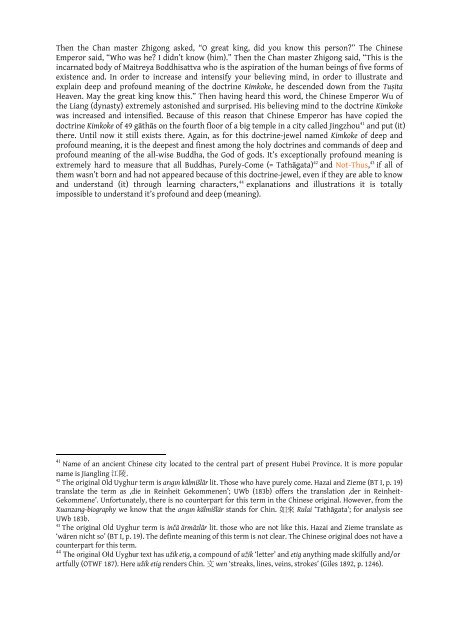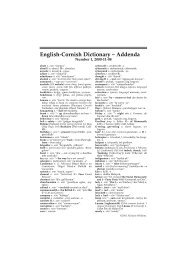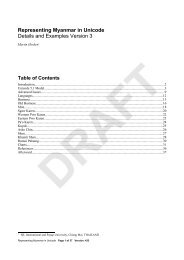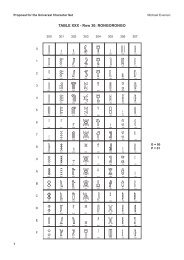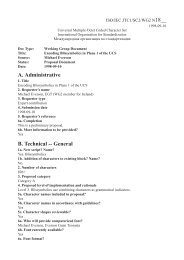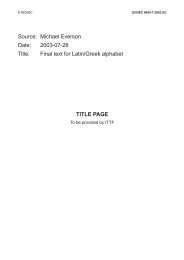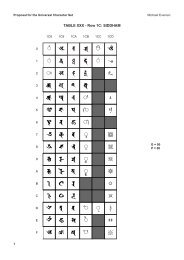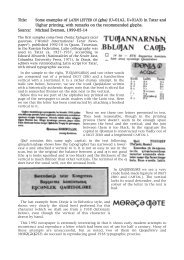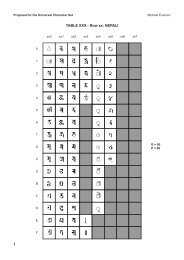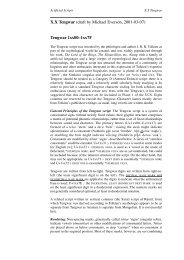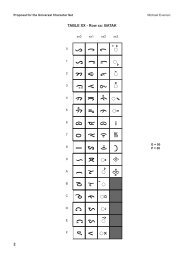The Vajracchedikā-sūtra with gāthās compiled by Master Fu - Evertype
The Vajracchedikā-sūtra with gāthās compiled by Master Fu - Evertype
The Vajracchedikā-sūtra with gāthās compiled by Master Fu - Evertype
You also want an ePaper? Increase the reach of your titles
YUMPU automatically turns print PDFs into web optimized ePapers that Google loves.
<strong>The</strong>n the Chan master Zhigong asked, “O great king, did you know this person?” <strong>The</strong> Chinese<br />
Emperor said, “Who was he? I didn’t know (him).” <strong>The</strong>n the Chan master Zhigong said, “This is the<br />
incarnated body of Maitreya Boddhisattva who is the aspiration of the human beings of five forms of<br />
existence and. In order to increase and intensify your believing mind, in order to illustrate and<br />
explain deep and profound meaning of the doctrine Kimkoke, he descended down from the Tuṣita<br />
Heaven. May the great king know this.” <strong>The</strong>n having heard this word, the Chinese Emperor Wu of<br />
the Liang (dynasty) extremely astonished and surprised. His believing mind to the doctrine Kimkoke<br />
was increased and intensified. Because of this reason that Chinese Emperor has have copied the<br />
doctrine Kimkoke of 49 <strong>gāthās</strong> on the fourth floor of a big temple in a city called Jingzhou 41 and put (it)<br />
there. Until now it still exists there. Again, as for this doctrine-jewel named Kimkoke of deep and<br />
profound meaning, it is the deepest and finest among the holy doctrines and commands of deep and<br />
profound meaning of the all-wise Buddha, the God of gods. It’s exceptionally profound meaning is<br />
extremely hard to measure that all Buddhas, Purely-Come (= Tathāgata) 42 and Not-Thus, 43 if all of<br />
them wasn’t born and had not appeared because of this doctrine-jewel, even if they are able to know<br />
and understand (it) through learning characters, 44 explanations and illustrations it is totally<br />
impossible to understand it’s profound and deep (meaning).<br />
41 Name of an ancient Chinese city located to the central part of present Hubei Province. It is more popular<br />
name is Jiangling 江 陵 .<br />
42<br />
<strong>The</strong> original Old Uyghur term is arıgın kälmišlär lit. Those who have purely come. Hazai and Zieme (BT I, p. 19)<br />
translate the term as ,die in Reinheit Gekommenen’; UWb (183b) offers the translation ‚der in Reinheit-<br />
Gekommene’. Unfortunately, there is no counterpart for this term in the Chinese original. However, from the<br />
Xuanzang-biography we know that the arıgın kälmišlär stands for Chin. 如 來 Rulai ‘Tathāgata’; for analysis see<br />
UWb 183b.<br />
43<br />
<strong>The</strong> original Old Uyghur term is inčä ärmäzlär lit. those who are not like this. Hazai and Zieme translate as<br />
‘wären nicht so’ (BT I, p. 19). <strong>The</strong> definte meaning of this term is not clear. <strong>The</strong> Chinese original does not have a<br />
counterpart for this term.<br />
44 <strong>The</strong> original Old Uyghur text has užik etig, a compound of užik ‘letter’ and etig anything made skilfully and/or<br />
artfully (OTWF 187). Here užik etig renders Chin. 文 wen ‘streaks, lines, veins, strokes’ (Giles 1892, p. 1246).


